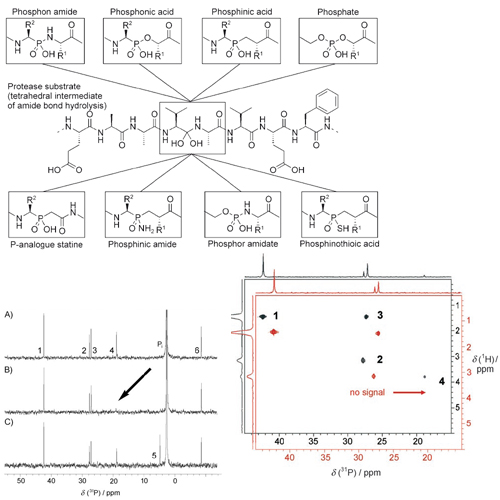Phosphorus NMR Spectroscopy as a Versatile Tool for Compound Library Screening
29-Feb-2008
Angew. Ch. Int. Ed., 2008, Vol. 47, 2608-11 published on 29.02.2008
Angew. Chem. Int. Ed., online article
Angew. Chem. Int. Ed., online article
NMR spectroscopy is a well-established technique for the screening of compound libraries. One of the biggest advantages of NMR spectroscopy in relation to other methods is that it directly detects even weakinteractions between ligand and target molecules, which makes it ideally suited for fragment-based ligand design. In addition, the number of false-positive hits, often obtained in bioassays, is minimized. Among the variety of NMR screening approaches, methodologies based on exclusively tracing ligand signals are the most powerful tools to identify binders in compound libraries. Standard and groupselective saturation-transfer difference (STD) spectroscopy or fluorine NMR screening are prominent examples. Together with recently developed highthroughput techniques, for example, target-immobilized NMR screening (TINS), ligand-based NMR screening is a potent technology in the field of drug science.











